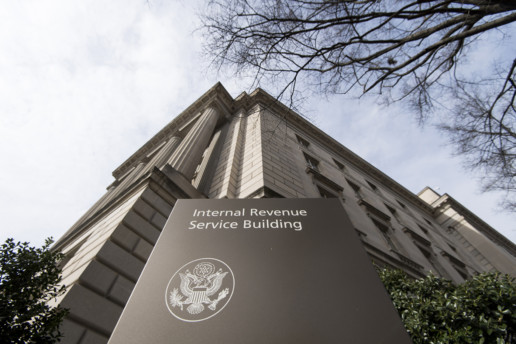2023 Inflation-Adjusted HSA Contributions
Read Time: 7 mins
HIGHLIGHTS
Background Details
On April 29, 2022, the IRS announced health savings account (HSA) contribution limits for 2023. The annual inflation-adjusted amounts demonstrate a notable spike having been increased by approximately 5.5% for 2023 over 2022 versus the 1.4% adjustment that occurred in 2022 over 2021 in response to the recent inflation surge.
The annual inflation-adjusted limit on HSA contributions for self-only coverage will be $3,850, up from $3,650 in 2022. The HSA contribution limit for family coverage will be $7,750, up from $7,300. In Revenue Procedure 2022-24, the IRS confirmed HSA contribution limits effective for calendar year 2023, along with minimum deductible and maximum out-of-pocket expenses for the HDHPs with which HSAs are paired.
HSA Contribution Limit (employer + employee)
Individual: $3,850 (Increase of $200 over 2022)
Family: $7,750 (Increase of $450 over 2022)
HSA Catch-Up Contributions (55+)
$1,000 (No change)
HDHP Minimum Deductibles
Individual: $1,500 (Increase of $100 over 2022)
Family: $3,000 (Increase of $200 over 2022)
HDHP Maximum Out-Of-Pocket (deductibles, co-pays, other amounts excluding premiums)
Individual: $7,500 (increase of $450 over 2022)
Faily: $15,000 (increase of $900 over 2022)
The new 2023 limits can be used by employers during open enrollment to encourage employees to start contributing to their accounts or to increase their current contributions. Employers not currently contributing to their employees' HSAs may want to consider the added benefit of an employer contribution to assist employees with the increased costs of care.
Employers who actively educate their employees on the benefits of HSAs and participate in contributions see increased engagement by employees and enhanced value perception of their health care benefits. Experts have shared a notable increase in employers matching employees' HSA contributions, similar to 401(k) retirement plan matches.
Caveats to Remember
- Exceeding the set contribution limits can result in an annual 6% excise penalty tax on the excess amount unless it is withdrawn from the HSA before the tax deadline for the year.
- Married couples with HSA-eligible family coverage share one family HSA contribution limit. Spouses who each have individual HSAs may contribute up to the Individual maximums in separate accounts.
- 55+ considerations:
- When both spouses are 55+, each may contribute the additional catch-up contribution as long as they have HSA accounts in separate names.
- When one spouse is 55+ and the other is <55, the 55+ spouse must have a separate account in order to contribute the additional allowed catch-up contribution.
ACA Limit Differences
Prompting some confusion for some plan administrators, there are two sets of limits on out-of-pocket expenses. The Department of Health and Human Services (HHS) issues annual out-of-pocket or cost-sharing limits for essential health benefits covered under an ACA_compliant plan (excluding grandfathered plans). The HHS limits for the 2023 annual dollar limits were issued at the end of 2021 and are higher than those set by the IRS. To qualify as an HSA-compatible HDHP, a plan must not exceed the IRS's lower out-of-pocket maximums. Take a look at the comparison:
| 2023 | |
|
HHS (ACA-compliant plans)
Max. out-of-pocket |
Individual: $9,100 (Increase of $350 over 2022)
Family: $18,200 (Increase of $800 over 2022) |
|
IRS (HSA-qualified HDHP plans)
Max out-of-pocket |
Individual: $7,500 (Increase of $450 over 2022)
Family: $15,000 (Increase of $900 over 2022) |
*The ACA's Individual out-of-pocket maximum for essential health benefits applies to each individual in a non-grandfathered group health plan, regardless of whether the individual is enrolled in individual or family coverage.
Excepted-Benefit HRA Maximum
In addition to the above increases, the IRS also raised the maximum amount employers may contribute to an excepted-benefit health reimbursement arrangement (HRA) from the 2022 amount of $1,800 to the new amount for 2023 of $1,950 (a $150 increase).
5 critical elements to consider when choosing an HSA administrator
The Employee Benefit Research Institute recently reported that 83 percent of today’s workforce said health insurance was very or extremely important in deciding whether they would change jobs or not. Read on to learn more.
If anyone needed any reminding, health insurance is still an urgent matter to today’s employees. According to Employee Benefit Research Institute’s 2017 Health and Workplace Benefits Survey, 83% of the workforce said that health insurance was very or extremely important in deciding whether to stay in or change jobs. Yet research has uncovered that employees tend to delay or disengage from retirement and healthcare decisions, which they view as difficult and complex.
Fortunately, with consumer-driven healthcare plans and health savings accounts on the rise, benefits managers have a real opportunity to turn this frustrating situation into a positive one for their workforce. A critical step in doing so is choosing the right health savings administrator.
Employers should consider the following five elements when choosing a health savings administrator, or for evaluating the one with which you’re currently working.
1. Minimize risk by ensuring business alignment. Look for a health savings administrator that aligns with your company’s mission and business goals. Lack of business alignment can create real risks to your organization and employees and can damage your company brand and employee experience. For example, if your account administrator nickels-and-dimes you and your employees with added fees, you’ll experience higher costs and reduced employee satisfaction.
2. Service, support are key to employee satisfaction. It’s a fact: Employees will have HSA-related questions — probably a lot of them. Their questions may range from pharmacy networks and claims to the details of IRS rules. That’s why account management and customer service support from your health savings administrator are vital. Having first-class customer service means that employees will be better educated on their savings accounts, which can result in HSA adoption and use to their fullest potential.

3. Education, communication drive adoption. Educating employees about health savings accounts using various methods is critical, especially in the first year of adoption. This ensures your employees understand the true benefits and how to maximize their account. As CDHPs require more “skin in the game,” consumers show a higher likelihood to investigate costs, look for care alternatives, use virtual care options, and negotiate payments with providers. These are all positive outcomes of HSA adoption, and an HSA administrator oftentimes can offer shopping, price and quality transparency tools to enable your employees to make these healthcare decisions.
4. Understand the HSA admin’s technology. Because most spending and savings account transactions are conducted electronically, it’s critical that your administrator’s technology platform be configured to deliver a positive user experience that aligns with your expectations. It should allow for flexibility to add or adjust offerings and enable personalization and differentiation appropriate for your brand.
Be aware that some vendors have separate technology platforms, each running separate products (i.e., HSAs versus FSAs) and only integrate through simple programming interfaces. Because the accounts are not truly integrated, consumers may need to play a bigger role in choosing which accounts their dollars come from and how they’re paid, leading to consumer frustration and an increase in customer service call volume. With a fully integrated platform, claims flow seamlessly between accounts over multiple plan years, products and payment rules.
5. Evaluate your financial investment. Transparent pricing and fees from your health savings administrator is important. Administrators can provide value in a variety of ways including tiered product offerings, no traditional banking fees or hidden costs, and dedicated customer service. It’s important to know what these costs are up front.
Evaluate your financial investment by knowing whether or not your health savings administrator charges for program upgrades, multiple debit cards, unique data integration requirements, ad-hoc reports and more. These fees can add up and result in a final investment for which your company didn’t plan. And, it’s best to know in advance if your account holders will be charged any additional fees. Not communicating these potential fees at adoption can lead to dissatisfaction, which can then hurt your employee satisfaction ratings and complete adoption of the savings account products.
Choosing a health savings administer is a critical decision that affects not only employee satisfaction but the entire company. With eight in 10 employees ranking their benefits satisfaction as extremely or very important in terms of job satisfaction, according to EBRI, taking the time to fully vet your health savings administrator will pay dividends.
SOURCE: Santino, S. (5 November 2018) "5 critical elements to consider when choosing an HSA administrator" (Web Blog Post). Retrieved from https://www.employeebenefitadviser.com/opinion/what-to-consider-when-choosing-an-hsa-administrator
Stop making 401(k) contributions. Fill up your HSA first
Open enrollment season is nearing, and soon, employees will be able to decide how much they want to contribute to their health savings accounts (HSA) next year. Read this blog post to learn why employees should contribute to their HSA before their 401(k).
With healthcare open enrollment season approaching, employees electing a high-deductible health plan will soon have an opportunity to decide how much to contribute to their health savings account for next year.
My advice?
Contribute as much as you possibly can. And prioritize your HSA contributions ahead of your 401(k) contributions. I believe that employees eligible to contribute to an HSA should max out their HSA contributions each year. Here’s why.
See also: What’s the best combination of spending/saving with an HSA?
HSAs are triple tax-free. HSA payroll contributions are made pre-tax. When balances are used to pay qualified healthcare expenses, the money comes out of HSA accounts tax-free. Earnings on HSA balances also accumulate tax-free. There are no other employee benefits that work this way.
HSA payroll contributions are truly tax-free. Unlike pre-tax 401(k) contributions, HSA contributions made from payroll deductions are truly pre-tax in that Medicare and Social Security taxes are not withheld. Both 401(k) pre-tax payroll contributions and HSA payroll contributions are made without deductions for state and federal taxes.
No use it or lose it. You may confuse HSAs with flexible spending accounts, where balances not used during a particular year are forfeited. With HSAs, unused balances carry over to the next year. And so on, forever. Well at least until you pass away. HSA balances are never forfeited due to lack of use.
Paying retiree healthcare expenses. Anyone fortunate enough to accumulate an HSA balance that is carried over into retirement may use it to pay for many routine and non-routine healthcare expenses.
See also: 3 things you should be telling employees about HSAs
HSA balances can be used to pay for Medicare premiums, long-term care insurance premiums, COBRA premiums, prescription drugs, dental expenses and, of course, any co-pays, deductibles or co-insurance amounts for you or your spouse. HSA accounts are a tax-efficient way of paying for healthcare expenses in retirement, especially if the alternative is taking a taxable 401(k) or IRA distribution.
No age 70 1/2 minimum distribution requirements. There are no requirements to take minimum distributions at age 70.5 from HSA accounts as there are on 401(k) and IRA accounts. Any unused balance at your death can be passed on to your spouse (make sure you have completed a beneficiary designation so the account avoids probate). After your death, your spouse can enjoy the same tax-free use of your account. (Non-spouse beneficiaries lose all tax-free benefits of HSAs).
Contribution limits. Maximum annual HSA contribution limits (employer plus employee) for 2019 are modest — $3,500 per individual and $7,000 for a family. An additional $1,000 in catch-up contributions is permitted for those age 55 and older. Legislation has been proposed to increase the amount of allowable contributions and make usage more flexible. Hopefully, it will pass.
HSAs and retirement planning. Most individuals will likely benefit from the following contribution strategy incorporating HSA and 401(k) accounts:
- Determine and make the maximum contributions to your HSA account via payroll deduction. The maximum annual contributions are outlined above.
- Calculate the percentage that allows you to receive the maximum company match in your 401(k) plan. Make sure you contribute at least that percentage each year. There is no better investment anyone can make than receiving free money. You may be surprised that I am prioritizing HSA contributions ahead of employee 401(k) contributions that generate a match. There are good reasons. Besides being triple tax-free and not being subject to age 70 1/2 required minimum distributions, these account balances will likely be used every year. Unfortunately, you may die before using any of your retirement savings. However, someone in your family is likely to have healthcare expenses each year.
- If the ability to contribute still exists, then calculate what it would take to max out your contributions to your 401(k) plan by making either the maximum percentage contribution or reaching the annual limit.
- Finally, if you are still able to contribute and are eligible, consider contributing to a Roth IRA. Roth IRAs have no age 70 1/2 minimum distribution requirements (unlike pre-tax IRAs and 401(k) accounts). In addition, account balances may be withdrawn tax-free if certain conditions are met.
The contributions outlined above do not have to be made sequentially. In fact, it would be easiest and best to make all contributions on a continuous, simultaneous, regular basis throughout the year. Calculate each contribution percentage separately and then determine what you can commit to for the year.
See also: Change to 2018 HSA Family Contribution Limit
Investing in HSA contributions is important. The keys to building an HSA balance that carries over into retirement include maxing out HSA contributions each year and investing unused contributions so account balances can grow. If your HSAs don’t offer investment funds, talk to your human resources department about adding them.
HSAs will continue to become a more important source of funds for retirees to pay healthcare expenses as the use of HDHPs becomes more prevalent. Make sure you maximize your use of these accounts every year.
SOURCE: Lawton, R. (19 September 2018) "Stop making 401(k) contributions. Fill up your HSA first" (Web Blog Post). Retrieved from https://www.benefitnews.com/opinion/viewsstop-making-401k-contributions-fill-up-your-hsa-first
What's the best combination of spending/saving with an HSA?
Health savings accounts (HSAs) are changing the way many people are planning for retirement. Do you know much about HSAs and what they can offer? Continue reading to learn more about them.
The old adage, “You need to spend money to make money,” is applicable to many areas of life and business, but when it comes to retirement, not so much. Particularly for people who are enrolled in retirement accounts, like the 401(k) or IRA.
After all, the more you’re able to fund these accounts on a yearly basis, the sooner you’ll be able to accrue enough money to retire to that beach condo or cabin in the backcountry. But in recent years, a newcomer has entered the retirement planning picture offering a novel new way to save money: By spending it.
The health savings account (HSA) has the potential to influence the spending/saving conundrum many young professionals face: Do I spend my HSA money on qualifying health care expenses (which can save me up to 40 percent on the dollar) or do I pay out of pocket for the same expenses and watch my HSA balance grow?
What many people don’t realize is that yearly HSA contributions are tax-deductible. So if account holders aren’t factoring in doctor co-payments, prescription drugs and the thousands of over-the-counter health products that tax-advantaged HSA funds can cover, they may be missing an opportunity to save in taxes each year.
By maximizing their contributions and paying with HSA funds as opposed to out-of-pocket, HSA users can cover products they were going to purchase anyway with tax-free funds, while using whatever is rolled over to save for retirement.
Spending more to save more. Who knew?
Here’s some food for thought that savvy employers should consider sharing with employees of all ages.
Facts about health savings accounts (HSAs)
HSAs were created in 2003, but unlike flexible spending accounts (FSAs) that work on a year-to-year basis, HSAs have no deadlines and funds roll over annually. HSAs also feature a “triple tax benefit,” in that HSA contributions reduce your taxable income, interest earned on the HSA balance accrues tax free, and withdrawals for qualifying health expenses are not taxed.
Account holders can set aside up to $3,500 (2019 individual health plan enrollment limit) annually and $7,000 if participating in the health plan as two-person or family, and these funds can cover a huge range of qualifying medical products and services.
HSAs can only be funded if the account holder is enrolled in an HSA-qualified high-deductible health plan (HDHP). If the account holder loses coverage, he/she can still use the money in the HSA to cover qualifying health care expenses, but will be unable to deposit more funds until HDHP coverage resumes. The IRS defines an HSA-qualified HDHP as any plan with a deductible of at least $1,350 for an individual or $2,700 for a family (in 2019 – limits are adjusted each year).
Despite their relatively short lifespan, HSAs are among the fastest growing tax-advantaged accounts in the United States today. In 2017, HSAs hit 22 million accounts for the first time, but a massive growth in HSA investment assets is the real story. HSA investment assets grew to an estimated $8.3 billion at the end of December, up 53 percent year-over-year (2017 Year-End Devenir HSA Research Report).
However, while HSAs offer immediate tax benefits, they also have a key differentiator: the ability to save for retirement. HSA funds roll over from year to year, giving account holders the option to pay for expenses out of pocket while they are employed and save their HSA for retirement.
If account holders use their HSA funds for non-qualified expenses, they will face a 20% tax penalty. However, once they are Medicare-eligible at age 65, that tax penalty disappears and HSA funds can be withdrawn for any expense and will only be taxed as income. Additionally, once employees turn 55, they can contribute an extra $1,000 per year to their HSAs, a “catch-up contribution,” to bolster their HSA nest eggs before retirement. When all is said and done, diligently funding an HSA can provide a major boost to employees’ financial bottom lines in retirement.
What’s the best HSA strategy by income level?
HSAs have immediate tax-saving benefits and long-term retirement potential, but they require different savings strategies based on your income level.
Ideally, if you have the financial means to do so, putting aside the HSA maximum each year may allow you to cover health expenses as they come up and continue saving for retirement down the road. But even if you’re depositing far below the yearly contribution limit, your HSA can provide a boost to your financial wellness now and in the future.
I’ve seen this firsthand. Before we launched our e-commerce store for all HSA-eligible medical products, we extensively researched the profiles of the primary HSA user groups through partnerships with HSA plan providers.
We then created “personas” that provide insights on how to communicate with different audiences about HSA management at varying points in the account holder’s life cycle, and these same lessons can be just as vital to employers.
The following contribution strategies are based on these personas and offer insights that could help employees get their HSA nest egg off and growing. These suggestions offer a means of getting started.
As employees receive pay raises and promotions, they may be able to increase their HSA contributions over time, but this can be a way to get their health care savings off the ground and then adjust to life with an HSA.
Disclaimer: These personas are for illustrative purposes only and in all cases you may want to speak with a tax or financial advisor. Information provided should not be considered tax or legal advice.
1. Employee Type: Millennials/Gen-Z with an income between $35-75k/year
For the vast majority of young professionals starting out, health care is not at the top of their budget priorities. However, high-deductible health plans have low monthly premiums, and by contributing to an HSA, an account holder can cover these expenses until the deductible is exhausted. For this group of employees, starting off small and gradually increasing contributions as income increases is a sound financial solution.
Potential Contribution Range: $1,000-$1,500
2. Employee Type: Full-Time HDHP Users Enrolled with an income between $35-60k/year
With many companies switching to all HDHP health plan options, a large contingent of workers find themselves using HDHPs for the first time. For this group, it’s all about finding the right balance between tax savings and the ability to cover necessary health expenses. Setting aside money in an HSA will allow workers to reduce how much they pay in taxes yearly by reducing their taxable income, while being able to pay down their deductible with HSA funds at the same time.
Potential Contribution Range: $1,000-$1,500
3. Employee Type: Staff with Families with an income between $75-100k/year
Low premiums from an HDHP plan are attractive for these employees, but parents will have far more health expenses to cover and more opportunities to utilize tax-free funds to cover health and wellness products. With more opportunities to spend down their deductible with qualifying health expenses and the resulting tax savings, parents should strive to put the family maximum contribution ($7000 for 2019) into their HSAs.
Potential Contribution Range:$4,000-$6,900
4. Employee Type: Pre-Retirement Staff with an income between $100-200k/year
Employees who are in their peak earning years have the greatest opportunity to put away thousands in tax-free funds through an HSA. So whenever possible, they should be encouraged to contribute the largest possible allocation to their HSA on a yearly basis. Additionally, employees age 55 and over can contribute an extra $1,000 to their HSA annually until they reach Medicare age at 65 to fast-track their HSA earnings.
Potential Contribution Range: HSA Maximum ($3,500 individual, $7,000 families for 2019)
What else should employers know about HSAs?
Employers can help employees get the most out of HSAs. Here are some tips:
- Employers should consider contributing to their employees’ accounts on an annual basis. Employer contributions to an HSA are tax-deductible, and this has the added bonus for employees of making it easier to max out their contributions annually.
- Remember: Employer and employee contributions cannot exceed the yearly HSA contribution limits ($3,500 individual, $7,000 family for 2019), so make this information clear to employees during open enrollment.
- If employees are still on the fence about HSAs, remind them that deductible expenses can be paid for with HSA funds, and yearly HSA contributions are tax-deductible for employees as well.
SOURCE:
Miller, J (2 July 2018) "What's the best combination of spending/saving with an HSA?" [Web Blog Post]. Retrieved from https://www.benefitspro.com/2018/06/08/whats-the-best-combination-of-spendingsaving-with/
Health Savings Accounts: What Did The IRS Change?
Don’t Get Tripped Up By The IRS’ Tweak To Health Savings Accounts
It’s tax time, and this week I answered questions from readers about the penalty for not having health insurance as well as changes to health savings accounts. I also discuss health insurance coverage options for a reader’s parents who are immigrants and green card holders.
Q: I heard that health savings account rules would be loosened under the new spending bill passed by Congress last month. Did that happen?
No. In fact, the standards have become slightly tighter this year. In recent years, members of Congress from both parties have supported expanding eligibility for health savings accounts and how the money in them can be spent, among other things. To date, though, those proposals haven’t become law.
Health savings accounts, which are linked to high-deductible health plans, continue to multiply. In 2017, there were 22 million accounts totaling more than $45 billion in assets, an increase of 11 percent in the number of accounts over the previous year, according to Devenir, a firm that offers advice on HSA investments. Money deposited in HSAs is tax-deductible, grows tax-free and can be used without owing tax to pay for medical expenses. Advocates promote the plans as a way to help consumers play a larger role in controlling their health spending and say that the tax advantages help people afford care.
The Internal Revenue Service announced last month that the maximum amount individuals with family coverage could contribute to their health savings accounts would actually be reduced slightly from their previously announced limit for 2018. The maximum contribution for people with individual coverage in 2018 remains $3,450. The $50 family coverage contribution reduction, from $6,900 to $6,850, is pretty small change. It happened because the federal government altered the way it calculates inflation adjustments to the contribution limits.
But ignoring the new limit could create headaches for people who have already made the maximum HSA contribution for the year based on the $6,900 figure, said Roy Ramthun, president of HSA Consulting Services. If you don’t ask the bank that handles your HSA to return the $50 plus any earnings that have accrued before the next tax season, your taxable income will be off by that amount, plus you’ll be on the hook for a 6 percent penalty for exceeding the maximum contribution allowed. That’s not going to amount to a lot of money, but there’s more than financial pain to consider, Ramthun said. “Do you really want to give the IRS a reason to come find you?”
Q: I didn’t have health insurance for one month last year, in January 2017. Do I owe a penalty for not having health insurance when I file my taxes this spring?
If you were uninsured for only one month in 2017, you won’t owe a penalty. People can be uninsured for up to three consecutive months during the year without triggering a tax penalty for not having coverage, said Tara Straw, a senior policy analyst at the Center on Budget and Policy Priorities. This year, for the first time, the Internal Revenue Service won’t accept electronically filed tax returns unless filers report whether they had health insurance all year, were exempt from the requirement or will pay a penalty for not having had coverage. Tax refunds that are due with paper returns that don’t have this information may be delayed, according to the IRS.
—khn.org






